The first violins were created during the early 1500s although they do not resemble very much the modern instrument that we know today as they had thicker and shorter less angled necks, shorter bridges and strings made of gut.
These instruments were considered lower class until Claudio Monteverdi chose to include one in his Baroque opera. Soon, famous composers like Johann Sebastian Bach discovered the instrument.
If you would like to skip straight to our top recommendation, check out this violin:

Credit: Amazon.com
Top Pick: Knilling Sinfonia Model 4/4
Each violin is individually set up with Knilling’s quality wood and attention to every detail of construction for sound and durability.
Why Trust Us
I have been a musician for 44 years. I started playing the piano at a young age and then the cello. I have raised five children with three of them actively playing as adults.
I have numerous friends who play musical instruments and have taken lessons at the University of Northern Iowa. I have played in orchestras where the violin was the featured instrument.
How to Choose a Violin
Choosing a violin can be tough because there is such a wide range of choices on the market. Therefore, it is necessary to understand the different sizes of violins and to understand what to look for when buying a violin.
Sizes
There are seven sizes of violins. The largest is known as a 4/4 or a full-size violin.
Most players who are over nine years old can play a full-size violin although it is recommended for players who have an arm length longer than 23.5 inches.
There are three common sizes of violins that parents may want to consider. Children who are not big enough to play a one-fourth size violin often do better with other musical activities and transferring to the violin later.
¾ Size
Many children who are nine or ten years old feel better playing a three-quarters size violin. This instrument is specially designed for players who have an arm length between 22 and 23.5 inches.
Half-Size
As the name suggests, these violins are half the size of a normal violin. Many children who are between six and 10 do better playing these violins especially if their arms measure between 20 and 22 inches long.
One-Fourth Size
Small children who are interested in learning to play the violin may feel more comfortable playing a one-fourth size violin. This is particularly the case if their arms are between 17 and 20 inches long.
Acoustic
When people think of a violin, they generally picture an acoustic violin in their mind’s eye. These violins do not have any electrical parts.
These violins can have electric pickups mounted to them after manufacturing to enhance the volume of their sound. These instruments are preferred by folk and classical musicians.
Electric
Advanced players may enjoy playing an electric violin. These violins produce a sharper sound than their acoustic counterparts. These instruments are usually preferred by rock and jazz bands.
Woods
Usually, violins are made from a combination of spruce and maple wood. The top of the violin is called the soundboard and produces the violin’s unique sound.
Spruce
The best spruce wood comes from colder climates because the wood is denser producing a more resonate sound. The longer the wood is allowed to dry, the better the instrument’s quality because it is less likely to crack.
While flaming and figuring do not affect the sound, it can make the instrument much prettier.
Maple
Most quality violins have back, sides and necks made of maple. The tighter the grain, the better the instrument will sound.
Ebony
Ideally, the fingerboard is made of ebony. This is not always practical in student-quality violins because of the high cost of ebony.
Varnishes
Beautiful violins have very thin layers of varnish applied that is polished to a high sheen between layers. While many players believe that the varnish does not affect the sound, others believe that thick varnish deepens the sound.
Skill Levels
Student
Violins priced under $800 are usually student violins as they are made with lower-quality wood. They usually have plastic pegboards and chinrests.
They can make the perfect choice for those who are interested in learning about the violin.
Intermediate
Intermediate violins are a step up in quality from student violins. These violins are made from a better quality wood but often do not have ebony fingerboards.
Professional
Professional violins are made by luthiers who handcraft each instrument. They are made with the best quality woods and usually have ebony fingerboards. They usually have wooden tailpieces.
These instruments can cost thousands of dollars. If money is a consideration, then consider looking at violins made by apprentice luthiers under the leadership of an expert.
Strings
While strings on violins can be changed, choosing an instrument with the strings that you want is a great place to start.
Gut strings generally take longer to stretch than synthetic strings and are not as prone to changing tones when the weather changes. The smaller the gauge, the brighter the sound.
Some manufacturers of high-quality gut strings include Piastro Oliv, Kaplan Golden Spiral and Damian Dlugolecki.
Steel Core
Steel core strings produce clear sounds with few overtones. They are more stable than gut strings and usually last longer.
A manufacturer of high-quality steel core strings are D’Addario Helicore and Jargar.
Synthetic
Synthetic strings usually produce a very stable warm tone. Dominant synthetic strings offer the musician a full rich sound with lots of overtones.
Evah Pirazzi synthetic core strings produce a very powerful sound without the player having to work very hard. However, they tend to wear out quickly.
Bows
Violin bows are made of carbon-fiber, Brazilwood or pernambuco. Most players prefer a carbon-fiber bow because they are not as susceptible to warping with changes in weather.
The bow’s curve and balance determine how well it will play for an individual player. The bow should easily play bouncing strokes.
The Competition
After hours of testing and research, here's the final competition.
| Instrument | Rating | Current Pricing |
|---|---|---|
Knilling Sinfonia Model 4/4 Violin | The strings on this instrument are high-quality steel |  |
Stentor 1500 | Comes with a hardwood chin rest ensuring that the student stay comfortable during long practice hours |  |
Bellafina Prodigy Violin | Comes with a Brazilwood bow that should provide years of playing enjoyment if protected from weather extremes. |  |
Bunnel Pupil Violin | Carved by hand and features a spruce top and a maple back, sides and neck |  |
Barcus Berry Acoustic Violins | Veautiful because of their subtle two-tone red color helping players stand out in a crowd |  |
Cremona SV-80 Violin | Features an antique look because of its Hill-style trimmings and hand-rubbed reddish-brown finish |  |
Our Recommendations
If you are a parent or a beginning student, then you may be confused over which violin is right to meet your playing needs.
Top Pick: Knilling Sinfonia Model 4/4

Credit: Amazon.com
This violin tops our list because of Knilling’s attention to detail. Each bridge is individually carved and fitted to the instrument because the spruce tops on each violin is slightly different.
Each groove on the bridge are individually lubricated ensuring the strings glide through easily increasing the time between needing to change new strings.
The soundboard of these instruments is spruce while the back and sides are old-growth European maple that has been properly dried.
Attention has also been given to each ebony tuning peg which are also lubricated to make sure that they turn easily. These pegs will not shrink over time ensuring that the instrument can be properly tuned for years to come.
The string holes are also individually drilled ensuring that they stay in strings stay in their proper position. The strings on this instrument are high-quality steel.
All the hardware on this violin is made in Germany where each instrument gets completely set up by a master.
The instrument comes with a Glasser fiberglass bow. These violins are available on Amazon for about $375.00
Stentor 1500 4/4

Credit: Thomann GmbH
Another instrument to consider, especially for its price, is the Stentor 1500. The top of this violin is fine-grain spruce allowing the instrument to produce a beautiful sound.
t has a solid maple back and sides that have a beautiful flaring, and a well-polished light brown color lacquer finish, carefully hand applied, making this an instrument that students will be proud to own.
It has with a hardwood chin rest ensuring that the student stay comfortable during long practice hours. Fine tuning this instrument is easy because it has an alloy tailpiece with four string adjustors allowing the player to easily adjust each string.
It comes with Red Label strings that players have trusted for their reliability for many years while allowing beginners to produce warm sounds.
The purfling is inlaid helping to protect the instrument from splitting if it is accidentally hit. It comes with a traditional wooden horsehair bow with an ebony frog.
It is easy to carry this violin to lessons and concerts because it comes with a padded canvas bag with an interior blanket to further protect the instrument.
This instrument is available for about $150 on Amazon.
Bellafina Prodigy

Credit: Musician’s Friend
The Bellafina Prodigy violin contains a spruce top that is of medium quality along with maple sides and back.
This violin features an ebony fingerboard making it easy for beginners to get their fingers in the exact right places.
It has a composite tailpiece allowing students to individually tune each string. D’Addario Zyex strings allowing players to achieve a resonant sound easily. It does a good job of staying in tune even when it is not played regularly.
Some buyers find that the f-hole finish needs to be more carefully carved.
This instrument comes with a Brazilwood bow that should provide years of playing enjoyment if protected from weather extremes. It is available from Musicians Friend for about $200.
Bunnel Pupil 4/4
Mr. Kennedy who is a classically trained violin player was disappointed in the quality of student violins available on the market, so he created his own over a period of time.
This violin comes ready to play after a final inspection done in Washington state. It is carved by hand and features a spruce top and a maple back, sides and neck. All fittings are first-grade ebony helping ensure that they will last for years.
This instrument would have placed higher if it came with a better quality bow, but players can always upgrade the bow at a later time. The bow is Brazilwood with horsehair.
It comes with a composite tailpiece that can be upgraded to ebony if the student desires later. This instrument is available on Amazon for about $200.
Barcus Berry Acoustic

Credit: Musician’s Friend
Legendary violinist John Barry helped design this instrument. Barcus Berry Acoustic Violins are handmade in Romania following very strict specifications.
While the company sells other musical instruments, their violins are the only ones that they make themselves. These violins feature Carpathian Maple sides and backs while the top is spruce.
All fittings are top quality ebony. These violins are beautiful because of their subtle two-tone red color helping players stand out in a crowd.
Each instrument has Super Sensitive Red Label strings that many teachers of beginners prefer on student instruments. The finish is hand-rubbed to a high gloss.
The instrument comes with a Glasser bow and a soft case. It is available on Amazon for about $600.
Cremona SV-80

Credit: Amazon.com
All spruce and maple wood used to make the Cremona SV-80 violin has been aged at least five years helping to ensure that it never warps.
The fingerboard is made of high-grade ebony. This violin features an antique look because of its Hill-style trimmings and hand-rubbed reddish-brown finish.
The inlaid purfling not only helps to protect the instrument but also helps to add to this instrument’s beautiful looks.
Each instrument has a handcrafted maple bridge, and an ebony Stradivari-style chin rest.
The Thomastik Dominant Perlon synthetic strings are extremely stable. This instrument comes with a Pernambuco wood bow with white horsehair and an ebony frog.
The Cremona SV-80 Violin is available on Amazon for about $575.
Works Cited
- Barcus Berry Violin Review. (2015, December 18). Retrieved December 7, 2016, from http://consordini.com/barcus-berry-violin-review/
- Best Knilling Violins Review 2016. (2015, December 8). Retrieved December 7, 2016, from http://consordini.com/best-knilling-violins-review/
- Cremona SV 800 Review 2016. (2015, December 15). Retrieved December 7, 2016, from http://consordini.com/cremona-sv-800-review/
- Guide to Choosing Violin Strings. (n.d.). Retrieved December 6, 2016, from http://www.violinist.com/wiki/violin-strings/
- Knowles, D., & Ward, R. (2014, May 16). How to Choose the Right Violin Bow. Retrieved December 6, 2016, from http://stringsmagazine.com/how-to-buy-the-right-violin-bow/
- Stone, D. (2014, April 28). 5 Best Violins for Beginners. Retrieved December 7, 2016, from http://www.normans.co.uk/blog/2015/04/5-best-violins-for-beginners/
- The Violin. (n.d.). Retrieved December 6, 2016, from http://musiced.about.com/od/beginnersguide/a/vcare.htm
- Violin Buying Guide. (2016, May 13). Retrieved December 6, 2016, from http://thehub.musiciansfriend.com/band-orchestra-buying-guides/violin-buying-guide#basics



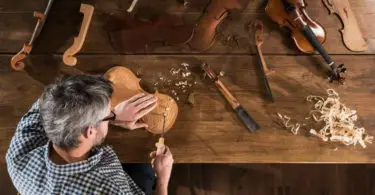
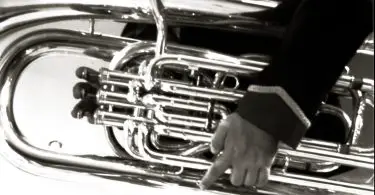
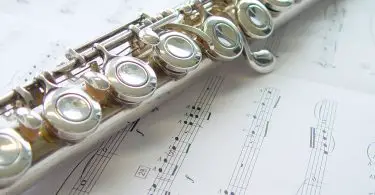
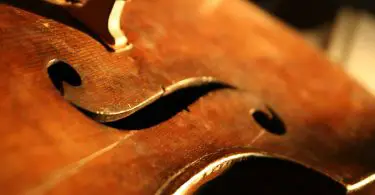
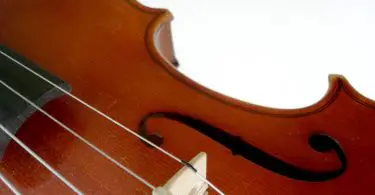
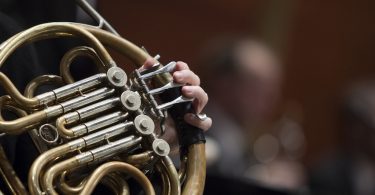
Start the discussion at talk.hearthemusicplay.com